When is Diwali 2025? Date, History, Rituals & Complete Celebration Guide
When is Diwali 2025 in India?
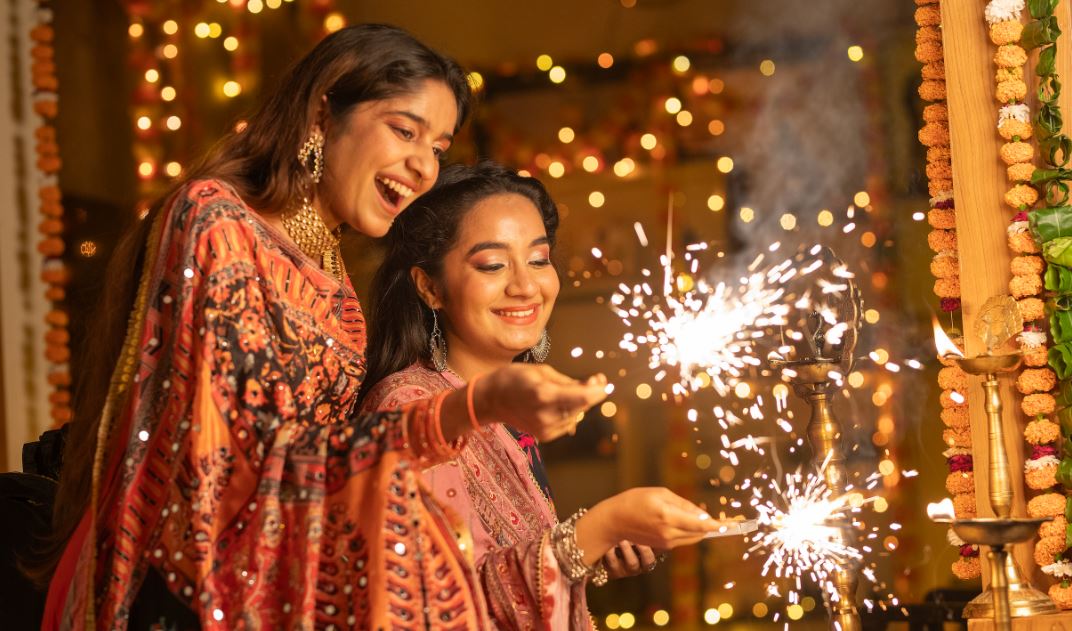
Diwali’s main day, also called Lakshmi Puja, will be celebrated on Monday, October 20, 2025.
Some regions may also extend the celebration into Tuesday, October 21, 2025, since Diwali is based on the Amavasya (new moon day) of the Kartik month in the Hindu calendar, which can overlap across two days. For accuracy, always check your local Panchang (Hindu calendar) for the correct muhurat timings in your city.
The Complete 5-Day Diwali 2025 Schedule
Diwali is not a one-day event—it’s a festival spread across five days, each with its own traditions, legends, and cultural meaning.
1. Dhanteras | Friday, October 17, 2025 |
2. Choti Diwali / Naraka Chaturdashi | Sunday, October 19, 2025 |
3. Diwali (Lakshmi Puja) | Monday, October 20, 2025 |
4. Govardhan Puja | Tuesday, October 21, 2025 |
5. Bhai Dooj | Wednesday, October 22, 2025 |
Diwali 2025 Muhurat and Puja Timings
The Lakshmi Puja Muhurat will fall on the evening of October 20, 2025. Timings vary by location:
Delhi | 6:00 PM – 8:00 PM |
Mumbai | 6:30 PM – 8:30 PM |
Kolkata | 5:30 PM – 7:30 PM |
Make sure to look at your local Panchang for precise puja timings.
The History of Diwali and Its Five Days
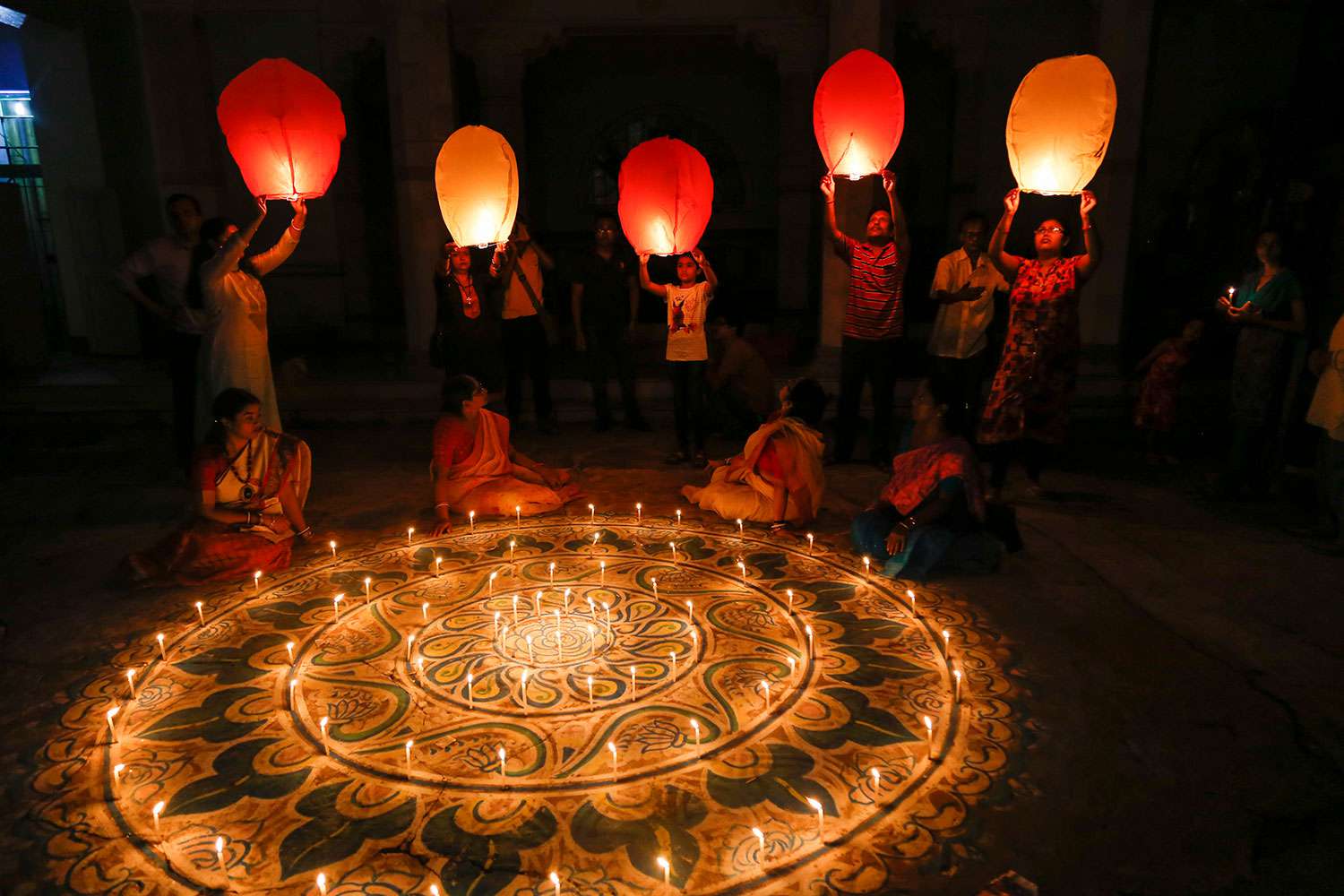
Diwali’s beauty lies not only in the lights and rituals but also in the stories behind each day. These legends come from ancient scriptures, local traditions, and different faiths. Together, they create a festival that is deeply spiritual, culturally diverse, and historically significant.
Day 1: Dhanteras – Honoring Dhanvantari and the Birth of Ayurveda
Dhanteras gets its name from “Dhan,” meaning wealth, and “Teras,” meaning the thirteenth day, because it falls on the 13th day of Krishna Paksha in the month of Kartik.
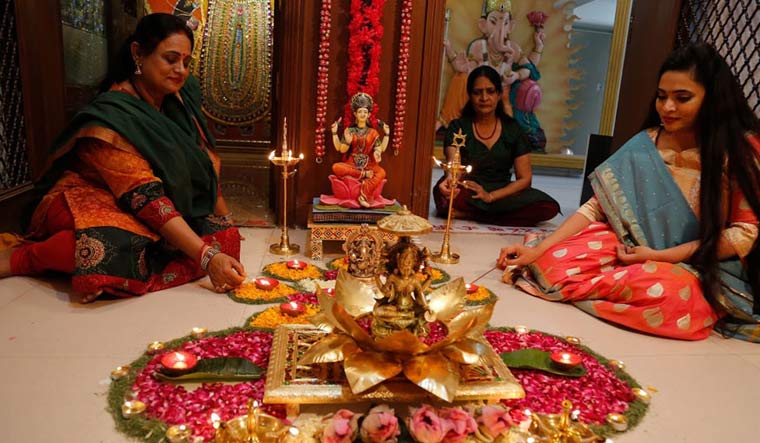
Legends say that during the churning of the cosmic ocean, Lord Dhanvantari, the divine healer and father of Ayurveda, appeared holding a pot of nectar. This day is therefore linked not only with material wealth but also with health, longevity, and well-being.
Over centuries, merchants began associating this day with the purchase of precious metals. People buy gold, silver, and utensils as a symbol of both prosperity and divine favor. In many regions, devotees also worship Yamraj, the god of death, by lighting a lamp outside their homes to ward off untimely death.
Thus, Dhanteras became a day that celebrates both health and wealth, showing that prosperity means little without good health to enjoy it.
Day 2: Choti Diwali / Naraka Chaturdashi – The Fall of Narakasura
Choti Diwali, or Naraka Chaturdashi, is rooted in the tale of the demon king Narakasura, who terrorized kingdoms, captured 16,000 women, and spread fear across the land.
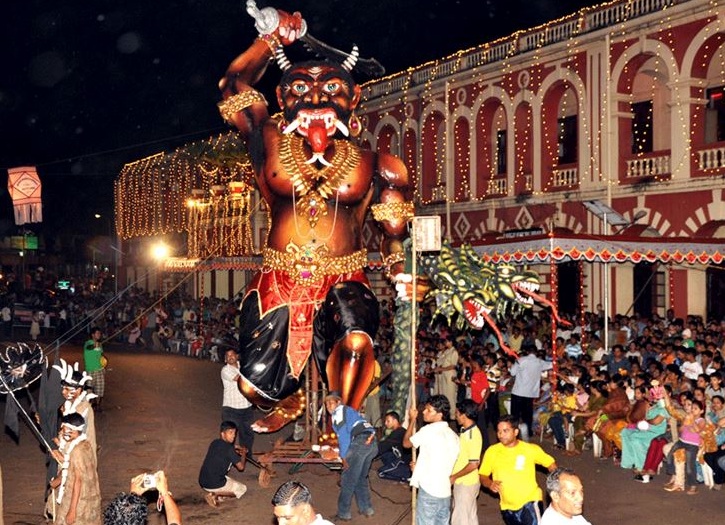
The gods pleaded with Lord Krishna, who, along with his consort Satyabhama, waged war against Narakasura. According to tradition, it was Satyabhama who struck the final blow, as Narakasura had a boon that he could only be killed by a woman. Before dying, Narakasura requested that his death be celebrated with lights and joy, not mourning.
That is why people light diyas and burst crackers on this day—to mark the end of tyranny and the restoration of dharma (righteousness). In South India, Naraka Chaturdashi is often the main day of Deepavali, celebrated with oil baths at dawn, elaborate feasts, and the symbolic breaking of fruits or pumpkins to destroy evil.
Day 3: Diwali / Lakshmi Puja – The Triumph of Light Over Darkness
The third day of Diwali is the most special, dedicated to Lakshmi Puja. On this day, families carefully clean and decorate every corner of their homes to create a warm and inviting atmosphere. People light small clay lamps to brighten rooms and courtyards, believing it encourages prosperity and happiness. Friends and relatives gather to exchange sweets and blessings, and homes fill with laughter, devotion, and the sense of new beginnings.
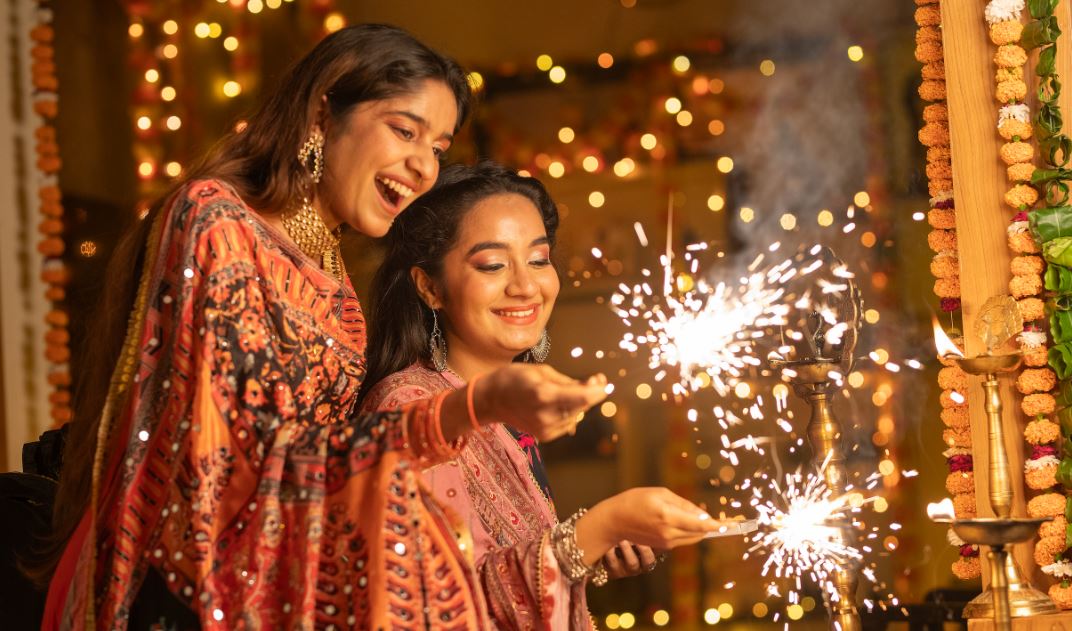
- After a long battle, Lord Rama, along with Sita and Lakshmana, came back to their hometown of Ayodhya. The people of the city celebrated by lighting small lamps and decorating their homes, marking a joyful reunion and the triumph of good over evil. . The people welcomed them by lighting thousands of oil lamps, transforming the dark night into one of brilliance. Even today, people continue the practice of lighting diyas to celebrate Diwali and invite positivity into their homes.
- Lakshmi’s Emergence from the Ocean: Another tale links this night to the churning of the ocean (Samudra Manthan), when Goddess Lakshmi emerged and chose Lord Vishnu as her eternal consort. Hence, devotees worship Lakshmi on Amavasya night, seeking her blessings for prosperity.
- Kubera and Ganesha Worship: Alongside Lakshmi, people also honor Lord Kubera (god of wealth) and Lord Ganesha (remover of obstacles). This symbolizes the balance between material prosperity and wisdom.
Across India, Lakshmi Puja is seen as the most sacred night of Diwali, when divine energy flows into every household. The rows of diyas are not just decoration—they represent the banishment of darkness and ignorance, welcoming light, wealth, and knowledge.
Day 4: Govardhan Puja – Krishna and the Power of Devotion
The fourth day is tied to a powerful story from the Bhagavata Purana. When the villagers of Gokul used to worship Lord Indra for rain, young Krishna advised them instead to honor Govardhan Hill, which provided them with fertile soil, grass for cattle, and water.
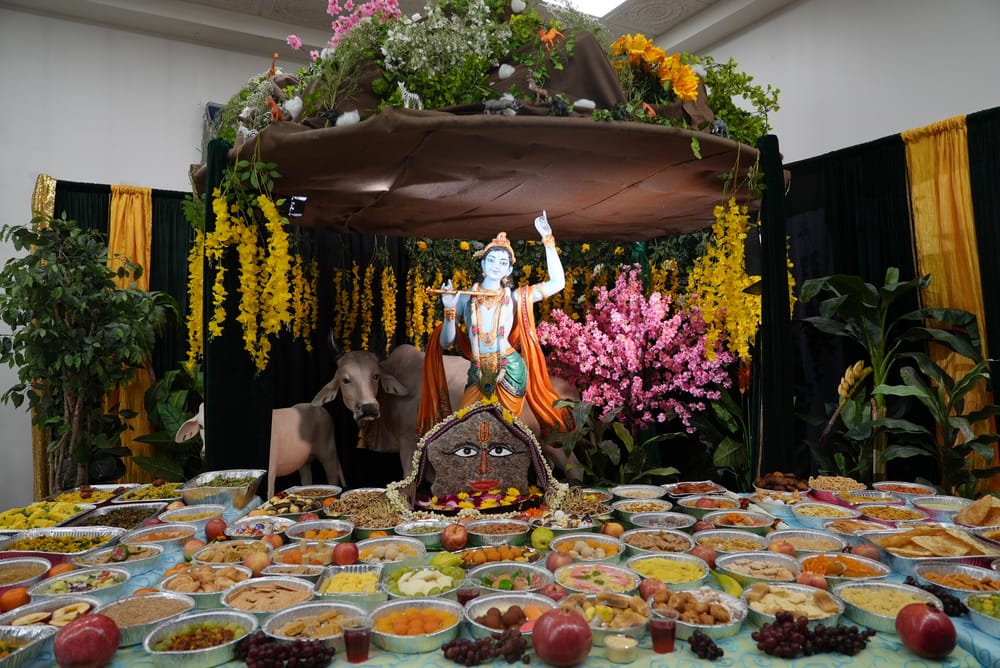
Angered, Indra unleashed torrential rains to punish the villagers. To protect them, Krishna lifted Govardhan Hill on his little finger for seven days, creating shelter until the storm passed. Realizing his arrogance, Indra bowed to Krishna’s divine power.
This day, known as Govardhan Puja or Annakoot, is celebrated by preparing an extravagant variety of vegetarian dishes, symbolizing gratitude for nature’s abundance. In temples like Mathura and Nathdwara, towering “food mountains” are offered to the deity.
The story of Govardhan teaches that devotion, humility, and gratitude to nature are greater than appeasing power or pride.
Day 5: Bhai Dooj – The Eternal Bond of Siblings
The last day of Diwali, called Bhai Dooj, honors the special bond between brothers and sisters. Its origin lies in the story of Yamraj, the god of death, and his sister Yami (also known as Yamuna).
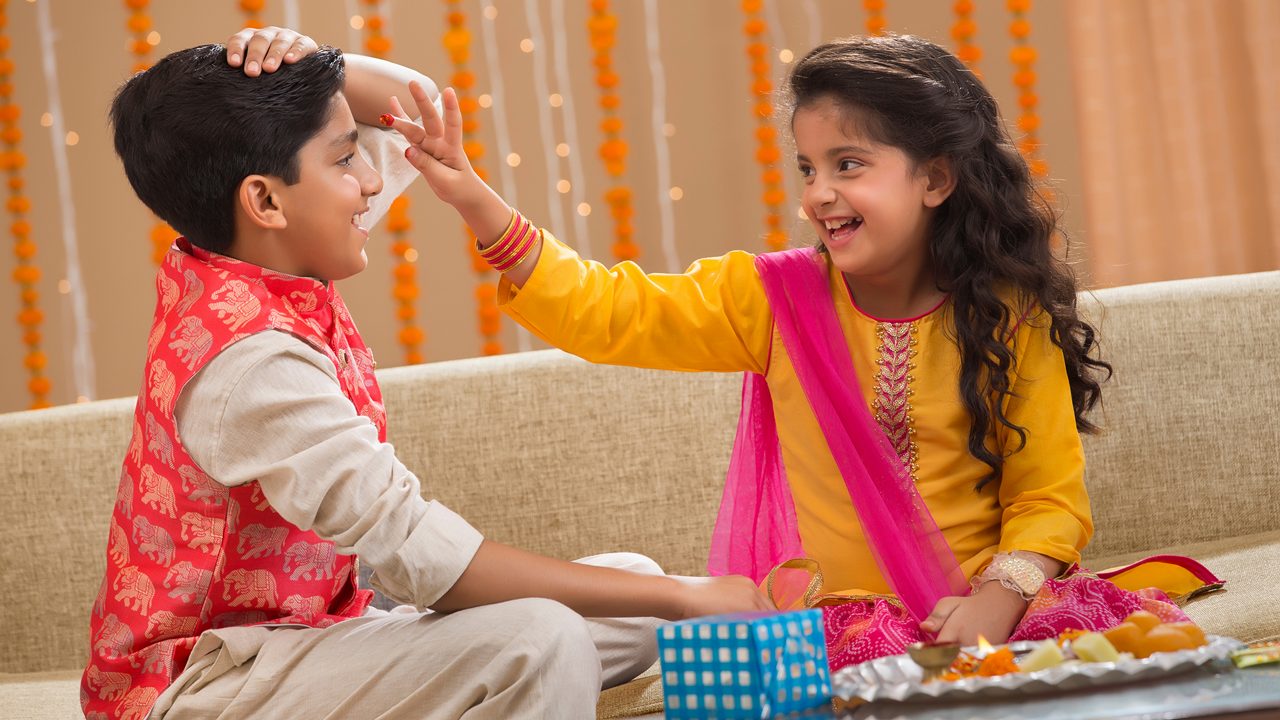
Legend says that Yami invited her brother to her home, performed aarti, applied tilak on his forehead, and prayed for his well-being. Touched, Yamraj granted her the boon that brothers who receive a tilak from their sisters on this day will enjoy long life and prosperity.
On this day, sisters pray for their brothers’ well-being, and in return, brothers vow to care for and protect their sisters throughout the year.. It is similar to Raksha Bandhan but with unique rituals and a deeper spiritual significance tied to longevity.
Beyond Hinduism: Jain, Sikh, and Buddhist Perspectives
- For Jains, Diwali is a very sacred day because it marks the time when Lord Mahavira reached Nirvana in 527 BCE at Pavapuri. Monks and followers light lamps symbolizing the eternal flame of knowledge.
- Sikhs celebrate it as Bandi Chhor Divas, when Guru Hargobind Ji was released from Gwalior Fort along with 52 imprisoned kings. Golden Temple in Amritsar glows with countless lamps on this night.
- Newar Buddhists in Nepal celebrate it as a festival of lights, marking the victory of wisdom and compassion over ignorance.
In this way, each day of Diwali is deeply rooted in history, mythology, and spirituality. Together, they weave a story of courage, humility, prosperity, love, and enlightenment—values that remain timeless even today.
Why Does the Diwali Date Change Every Year?
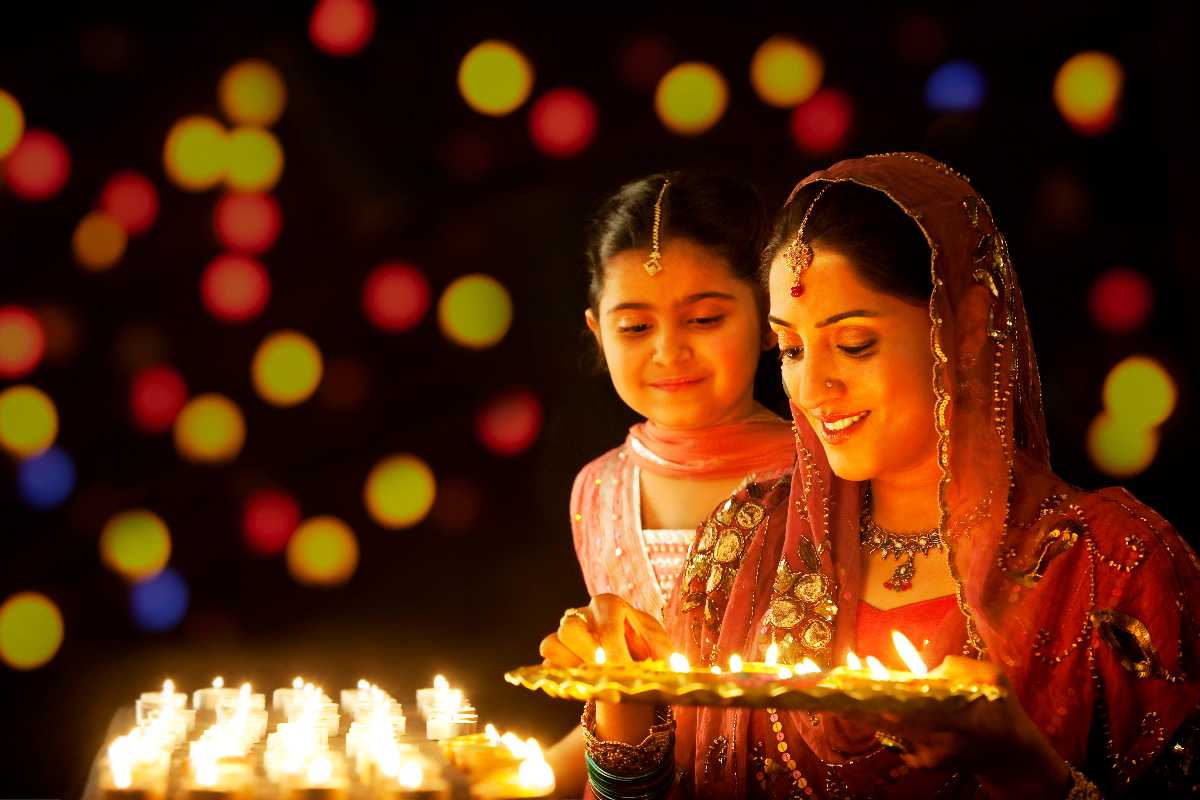
Diwali doesn’t fall on the same date each year because it is based on the Hindu lunar calendar. The festival is observed on the new moon day of the Kartik month, which usually comes in October or November.
Since the lunar and solar calendars don’t perfectly align, the dates shift annually. That’s why you’ll often see slight differences in Diwali dates across regions and communities.
Regional Variations: Diwali vs. Deepavali
Though Diwali is celebrated across India, the way it is observed changes with each region, influenced by local legends, deities, and cultural traditions.
North India – The Homecoming of Lord Rama
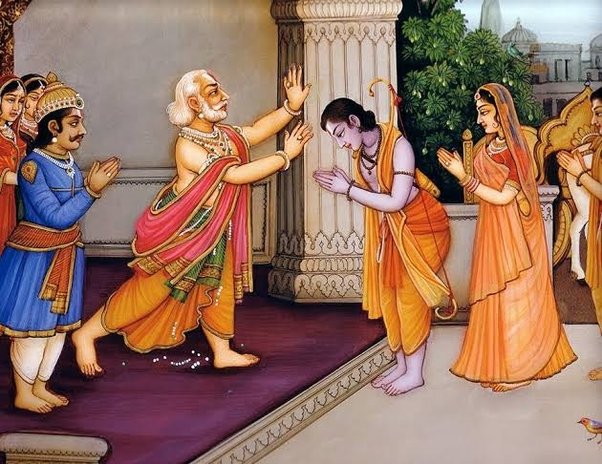
In North India, Diwali commemorates the return of Lord Rama to Ayodhya after defeating Ravana. The people of Ayodhya lit rows of earthen lamps (diyas) to welcome him, symbolizing the triumph of good over evil. Even today, entire cities glow with lights and fireworks, echoing that grand welcome. Temples host elaborate aarti ceremonies, and households prepare special sweets, making it the most awaited festival of the year in the region.
South India (Deepavali) – The Defeat of Narakasura
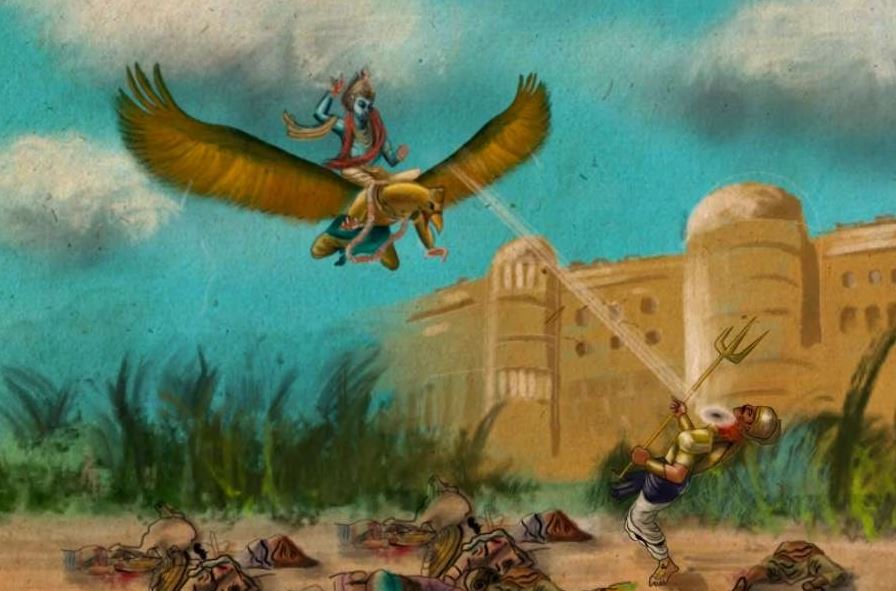
In South India, the festival is called Deepavali and is closely associated with Lord Krishna’s victory over the demon Narakasura. Celebrations usually begin a day earlier than in the North. Families start the day with a ritual oil bath at dawn, believed to cleanse the body and soul, followed by wearing new clothes and offering prayers. Crackers and feasts are a major part of the day, signifying the joy of liberation from evil.
West India – Chopda Pujan and the New Year

In states like Gujarat, Maharashtra, and Rajasthan, Diwali also signals the start of the new financial year, with businesses performing special rituals to seek prosperity. On this day, business owners perform Chopda Pujan, where account books are sanctified before Goddess Lakshmi and Lord Ganesha. The ritual symbolizes inviting divine blessings for prosperity and success in the coming year. Markets are illuminated with lamps, and families exchange sweets as a gesture of goodwill and abundance.
East India – Kali Puja and Divine Power
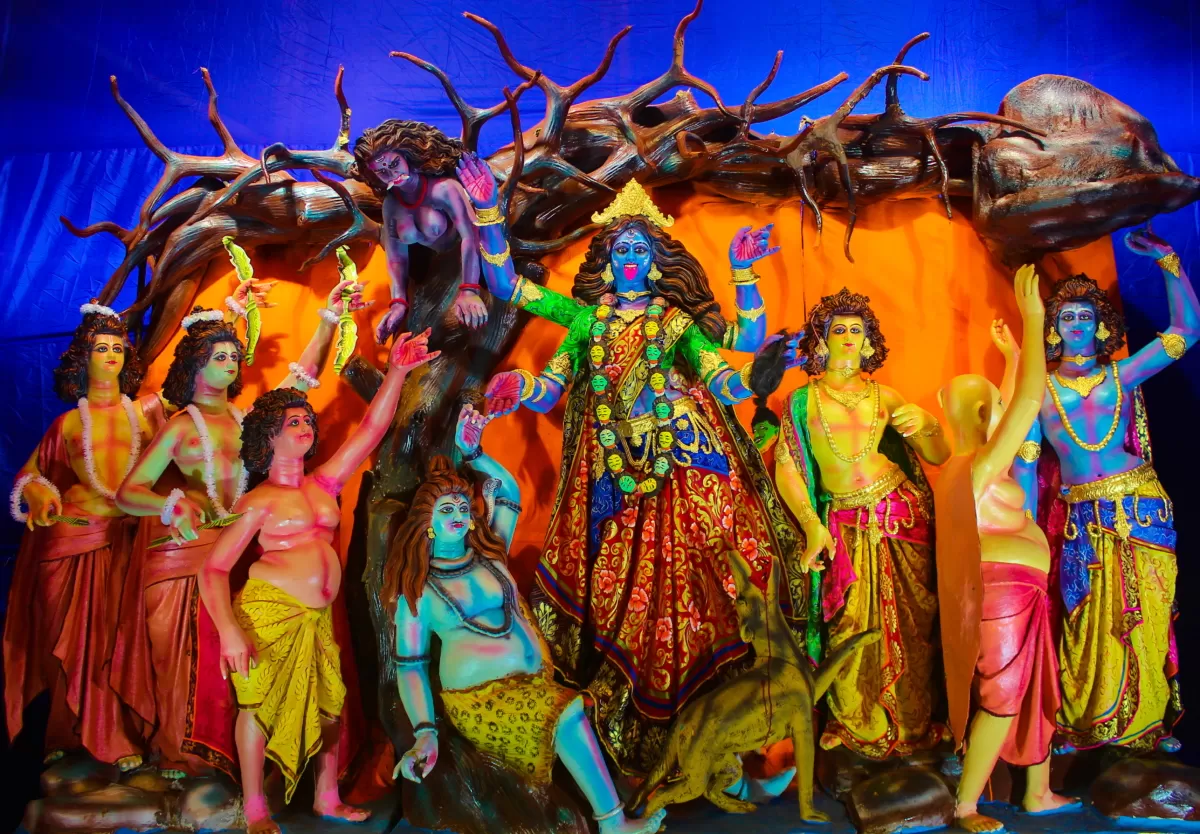
In Bengal, Assam, and Odisha, Diwali coincides with Kali Puja, where Goddess Kali is worshipped instead of Lakshmi. Unlike the serene image of Lakshmi, Kali represents the fierce power of time and destruction of evil. Temples and homes set up grand idols of the goddess, decorated with hibiscus flowers and offerings. Devotees light lamps and chant mantras, invoking her strength to destroy negativity and protect dharma. The night skies glow with fireworks, making it a deeply spiritual yet festive occasion.
Eco-Friendly Diwali 2025 Ideas
As awareness grows, more families are shifting to sustainable celebrations:
- Use earthen diyas instead of plastic lights.
- Replace firecrackers with green crackers or skip them altogether.
- Gift eco-friendly items like plants, handmade crafts, or organic products.
- Reuse decorations and support local artisans instead of mass-produced plastic.
- Focus on shared experiences—family dinners, storytelling, or community service.
An eco-friendly Diwali not only reduces pollution but also restores the festival’s essence: spreading light and positivity.
Modern Diwali Trends In 2025
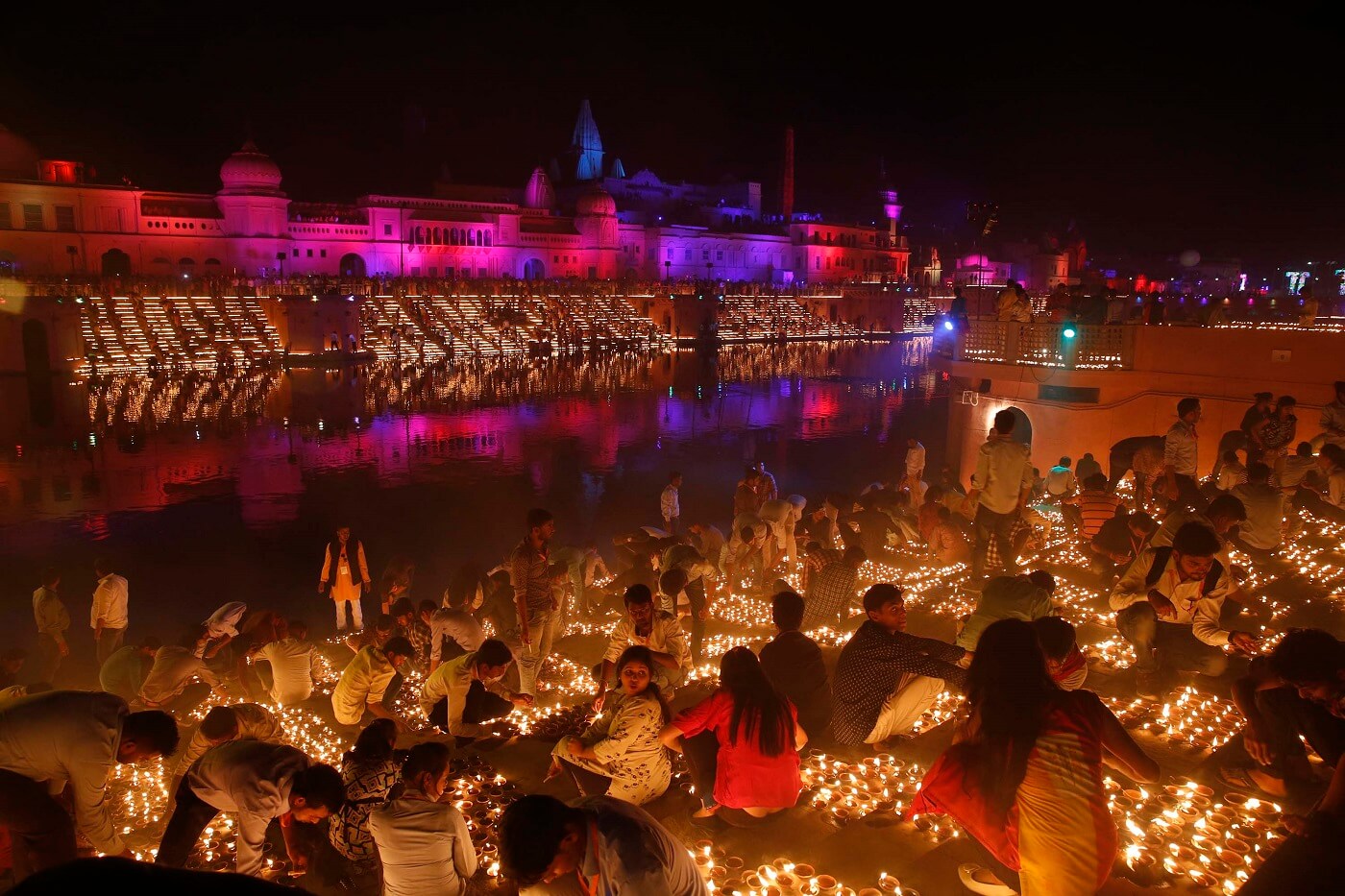
1. Gifting Trends
Instead of the usual sweets and dry fruits, many families now prefer:
- Personalized hampers
- Handmade artisanal goods
- Digital gift cards
- Experience-based gifts (spa vouchers, travel, workshops)
2. Fashion and Decoration
Ethnic wear continues to dominate, but eco-conscious fabrics and fusion styles are on the rise. Home décor now blends tradition with minimalism—think hand-painted diyas, fairy lights, and organic rangoli colors.
3. Travel During Diwali
For some, Diwali is about reuniting with family. For others, it’s an opportunity for a festive vacation. Destinations like Jaipur, Varanasi, and Amritsar shine during Diwali, while international getaways like Dubai and Bali attract travelers seeking both celebration and relaxation.
Final Thoughts: Embrace the Light of Diwali 2025
Diwali is more than just a festival—it is a reminder of hope, positivity, and togetherness. Its stories, whether of Rama, Krishna, Mahavira, or Guru Hargobind Ji, all point to one truth: light will always overcome darkness.
As you prepare for Diwali 2025, remember that the celebration isn’t about grandeur or perfection. It’s about love, devotion, and spreading joy. Light a diya, share a sweet, and spend time with loved ones—that’s where the real magic lies.
Get In Touch With Our Travel Expert
